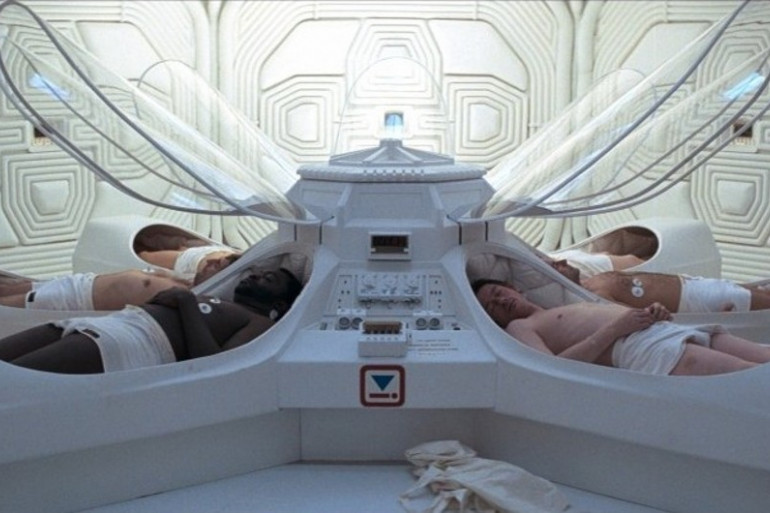|
|
Envo |
Cryopreservation procedures (both for humans and other biological materials) are improving over time, as scientists and researchers develop new technologies. That has been the case ever since the early days of cryonics in the 1960s. Probably the most effective implementation to date was the switch from straight freezing to vitrification with cryoprotection perfusion.
In this article, we take a look at when and how vitrification first became a part of the cryopreservation procedure and how it has developed over time.
What is Vitrification?
Vitrification is the transformation of a substance into a glass-like state. In cryonics, this is achieved by following multiple steps:
First, the patient is stabilised via external cooling, Cardiopulmonary support (CPS), and medication. Then blood is removed from the body, and a type of medical-grade antifreeze called a cryoprotectant solution is perfused into the body. Following this, the body is gradually cooled down until the patient reaches around -130°C. This is when they pass through the so-called glass transition temperature and become vitrified. Subsequently, the patient is cooled down further to the temperature of liquid nitrogen (-196°C) for long-term storage (or to about -140°C in the case of Intermediate Temperature Storage).
When Was Vitrification First Introduced in Cryopreservation?
In the early years of cryonics in the 1960s and 1970s, there was no vitrification to speak of. In fact, the first time it was even considered was in 1984 when cryobiologist Gregory Fahy proposed vitrification as an approach to cryopreservation.
Vitrification had been observed in cryobiology before, in cases where water cooled too fast to form ice crystals. Yet fast cooling was not an option for cryonics, as it would result in thermal shock. However, Fahy had an idea how to apply this knowledge to modern cryopreservation practices. He proposed to administer cryoprotectants that would bring down the freezing point of water inside the body to a point below that of the glass transition temperature. By doing this, it was possible to minimise ice crystal formation during the entire cooling process.
How Vitrification in Cryopreservation developed over time
It should come as no surprise that, while generally successful, first attempts at cryopreservation with vitrification weren’t perfect. As scientists started to gradually understand the effects of cryoprotectants and vitrification on the human body better, they began adapting their methods. This adaptation can be summarised into six “generations” that showed a gradual increase in cryoprotection quality.
Generation 1
The first, and simplest vitrification was conducted by administering a single cryoprotective agent inside a carrier solution. This approach certainly did the job, but turned out to be less helpful and more harmful than hoped.
Generation 2
It was then discovered that a less toxic mix with a higher total cryoprotectant concentration could be achieved by combining DMSO with amides such as acetamide or formamide, and adding propylene glycol. This formed the basis for the VS41A (aka VS55) vitrification solution, enabling the most advanced vitrification of the mid 1990s.
Generation 3
Further research conducted by Fahy led to the discovery that cryoprotectant toxicity correlated with the number of water molecules per cryoprotectant polar group. This newfound knowledge was applied by replacing the propylene glycol in VS41A with ethylene glycol, generating the so-called Veg vitrification solution.
Generation 4
The next step in increasing cryopreservation quality came with the addition of polymers. Adding them to the cryoprotectant solutions permitted further reductions in toxicity by reducing the concentration of penetrating cryoprotectants necessary to achieve vitrification.
Generation 5
The addition of specific polymers continued in the 5th generation of vitrification procedures, as ice-blocking polymers were able to reduce the concentration of all cryoprotectants necessary to achieve vitrification even further. The most prominent solution of this generation is VM3.
Generation 6
The last major discovery regarding vitrification relates to chilling injuries. This type of damage is caused by passing through certain sub-zero temperature ranges, a problematic occurrence for cryonics as a whole. Researchers have found that this type of injury could be overcome by increasing the tonicity of non-penetrating components of vitrification solutions. VM1 and M22, the cryoprotectants currently used by major human cryopreservation companies are of this generation.

Vitrification Today
Thanks to the outstanding research by leading cryobiology experts, successful vitrification has now been demonstrated for heart valves, vascular tissue, cartilage, cornea, human sperm, and more. Red blood cells can readily be cryopreserved for future blood transfusion and preserved sperm is frequently used for artificial fertilisation.
Additionally, vitrification has shown effectiveness in the preservation of tissue slices, including brain slices, and the histological preservation of larger systems. Nevertheless, vitrification research is anything but over at this point. Future generations of cryoprotectant solutions are tasked with finding an answer to dealing with their inherent toxicity amongst other problems that still need to be solved.
Removing toxicity from the equation could potentially have major impacts on organ preservation, another field where cryopreservation is currently being tested. Additionally, revival from biostasis could be made much easier through advancements of this kind.
Cryoprotection Perfusion with Tomorrow Bio
Currently, Tomorrow Bio and Cryonics Institute make use of an in-house optimised version of the VM1 agent, which has proven itself as one of the least toxic vitrification solutions in lab trials. However, improvements can definitely still be made, and many scientists today have made it their goal to find exactly those.
A lab called Advanced Neural Bioscience (ANB) is hard at work discovering more efficient solutions for cryopreservation. Tomorrow Bio’s R&D Initiative is also amongst those that try to push the field of cryonics forward and find solutions to the obstacles currently in the way of future revival from biostasis.
Thanks to our members and generous Tomorrow Fellows funding, we are able to not only provide a state-of-the-art cryopreservation service but also help increase its quality over time










